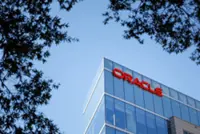Barcelona's public transport system is testing AI to help detect vehicles obstructing reserved lanes and stops. — Unsplash
In collaboration with the city council, Barcelona's transport company (TMB) has launched an innovative pilot project designed to improve the flow of bus traffic in the city. The project is based on a solution tried and tested in New York, which involves equipping certain buses with cameras paired with artificial intelligence capable of detecting vehicles obstructing the flow of public transport.
For the moment, the project concerns four buses on the H12 and D20 lines. They have been fitted with front cameras, paired with an artificial intelligence system developed by the American company Hayden AI. This system automatically detects vehicles parked illegally in bus lanes or at bus stops by analyzing the environment around the bus in real time.
Bus lanes are essential to guaranteeing the reliability and speed of the service. Static infringements affect safety and slow down buses. Cars parked near bus stops also impede access for users with reduced mobility.
Every time an infringement is detected, cameras installed at the front of the buses concerned record photos and video footage. However, no license plates or faces are recorded; only anonymized statistical data are transmitted, in compliance with the General Data Protection Regulation (GDPR). So far, 2,500 violations have been identified in one month, but no fines have been issued. The pilot phase is scheduled to last six months, with the aim of integrating the system into the entire fleet and potentially introducing sanctions.
The system developed by Hayden AI has already been tried and tested in the USA, where it is fitted to bus fleets in New York, Los Angeles, Washington and Oakland. By the end of 2024, more than 1,000 buses in New York had been equipped with this technology. Since 2019, more than 438,000 violation notices have been issued for vehicles driving in bus lanes. In five years, the authorities have seen an average 5% increase in public transport speed, as well as a 20% reduction in collisions and an estimated 5% to 10% drop in CO2 emissions, depending on the neighborhood. – AFP Relaxnews





